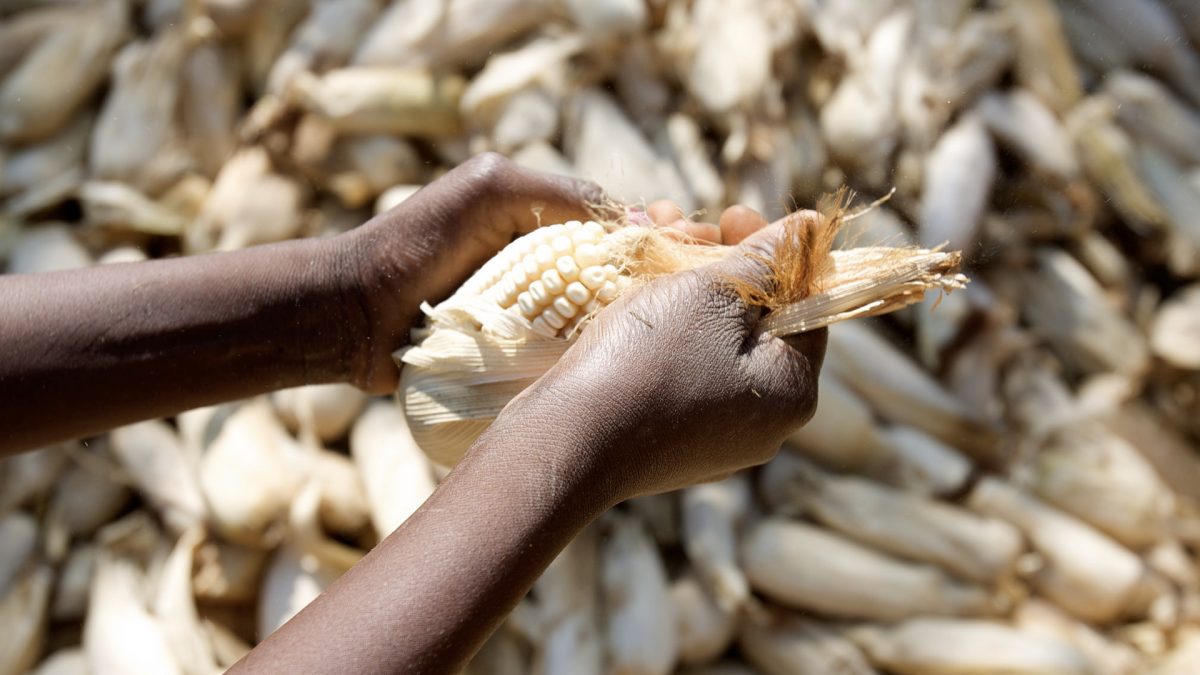Colorectal cancer is the second leading cause of cancer death in the United States, after lung cancer. The rates of lung cancer around the world vary by a factor of 10. If there was nothing we could do to prevent lung cancer—if it just happened at random—we’d assume that the rates everywhere would be about the same. But since there’s such a huge variation in rates, it seems like there’s probably some external cause. Indeed, we now know smoking is responsible for 90% of lung cancer cases. If we don’t want to die of the number-one cancer killer, we can throw 90% of our risk out the window just by not smoking.
There’s an even bigger variation around the world for colon cancer. As discussed in Solving a Colon Cancer Mystery, it appears colon cancer doesn’t just happen, something makes it happen. If our lungs can get filled with carcinogens from smoke, maybe our colons are getting filled with carcinogens from food? Researchers from the University of Pittsburgh and the University of Limpopo sought to answer the question, “Why do African Americans get more colon cancer than native Africans?” Why study Africans? Because colon cancer is extremely rare in native African populations, more than 50 times lower than rates of Americans, white or black.
It’s the fiber, right? The first to describe the low rates of colon cancer in native Africans, Dr. Denis Burkitt ascribed it to their staple diet traditionally high in whole grains and, consequently, high in fiber content. We seem to get a 10% reduction in risk for every 10 grams of fiber we eat a day. If it’s a 1% drop for each gram, and native Africans are eating upwards of 100 grams a day, it could explain why colon cancer is so rare in sub-Saharan Africa.
Wait a second. The modern African diet is highly processed and low in fiber, yet there has been no dramatic increase in colon cancer incidence. Their diet today has such a low fiber content because most populations now depend on commercially produced refined cornmeal. We’re not just talking low fiber intake, we’re talking United States of America low, down around half the recommended daily allowance. Yet colon disease in Africa is still about 50 times less common than in the United States.
Maybe it’s because native Africans are thinner and exercise more? No, they’re not, and no, they don’t. If anything, their physical activity levels may now be even lower than Americans’. So, if they’re sedentary like us and eating mostly refined carbs, few whole plant foods, and little fiber like us, why do they have 50 times less colon cancer than we do? There is one difference. The diet of both African Americans and Caucasian Americans is rich in meat, whereas the native Africans’ diet is so low in meat and saturated fat they have total cholesterol levels averaging 139 mg/dL, compared to over 200 mg/dL in the United States.
They may not get a lot of fiber anymore, but they continue to minimize meat and animal fat consumption, which supports other evidence indicating the most powerful determinants of colon cancer risk may be meat and animal fat intake levels. So, why do Americans get more colon cancer than Africans? Maybe the rarity of colon cancer in Africans is not the fiber, but their low animal product consumption.
Although opinions diverge as to whether cholesterol, animal fat, or animal protein is most responsible for the increased colon cancer risk, given that all three have been proven to have carcinogenic properties, it may not really matter which component is worse, as a diet laden in one is usually laden in the others.
I’ve previously suggested phytates may play a critical role as well (Phytates for the Prevention of Cancer). Resistant starch may be another player. Since native Africans cool down their corn porridge, some of the starch can crystallize and effectively turn into fiber. (This is the same reason pasta salad and potato salad better feed our gut bacteria than starchy dishes served hot.) I touch on it briefly in Bowel Wars: Hydrogen Sulfide vs. Butyrate. Resistant starch may also help explain Beans and the Second Meal Effect. And for even more, see Resistant Starch & Colon Cancer and Getting Starch to Take the Path of Most Resistance.
Fiber may just be a marker for healthier eating since it’s only found concentrated in unprocessed plant foods. So, the apparent protection afforded by high fiber diets may derive from whole food plant-based nutrition rather than the fiber itself (so, fiber supplements would not be expected to provide the same protection). Here are some videos that found protective associations with higher fiber diets:
- Fiber vs. Breast Cancer
- Prostate Cancer Survival: The A/V Ratio
- Burkitt’s F-Word Diet
- How Fiber Lowers Cholesterol
- Breast Cancer and Constipation
- How to Prevent a Stroke
What might be in animal products that can raise cancer risk? Here’s a smattering:
- Phytates for the Prevention of Cancer (heme iron)
- Reducing Cancer Risk In Meateaters (heterocyclic amines)
- How Our Gut Bacteria Can Use Eggs to Accelerate Cancer
- Prevent Cancer From Going on TOR
In health,
Michael Greger, M.D.
PS: If you haven’t yet, you can subscribe to my free videos here and watch my live, year-in-review presentations:
- 2012: Uprooting the Leading Causes of Death
- 2013: More Than an Apple a Day
- 2014: From Table to Able: Combating Disabling Diseases with Food
- 2015: Food as Medicine: Preventing and Treating the Most Dreaded Diseases with Diet
- 2016: How Not To Die: The Role of Diet in Preventing, Arresting, and Reversing Our Top 15 Killers
